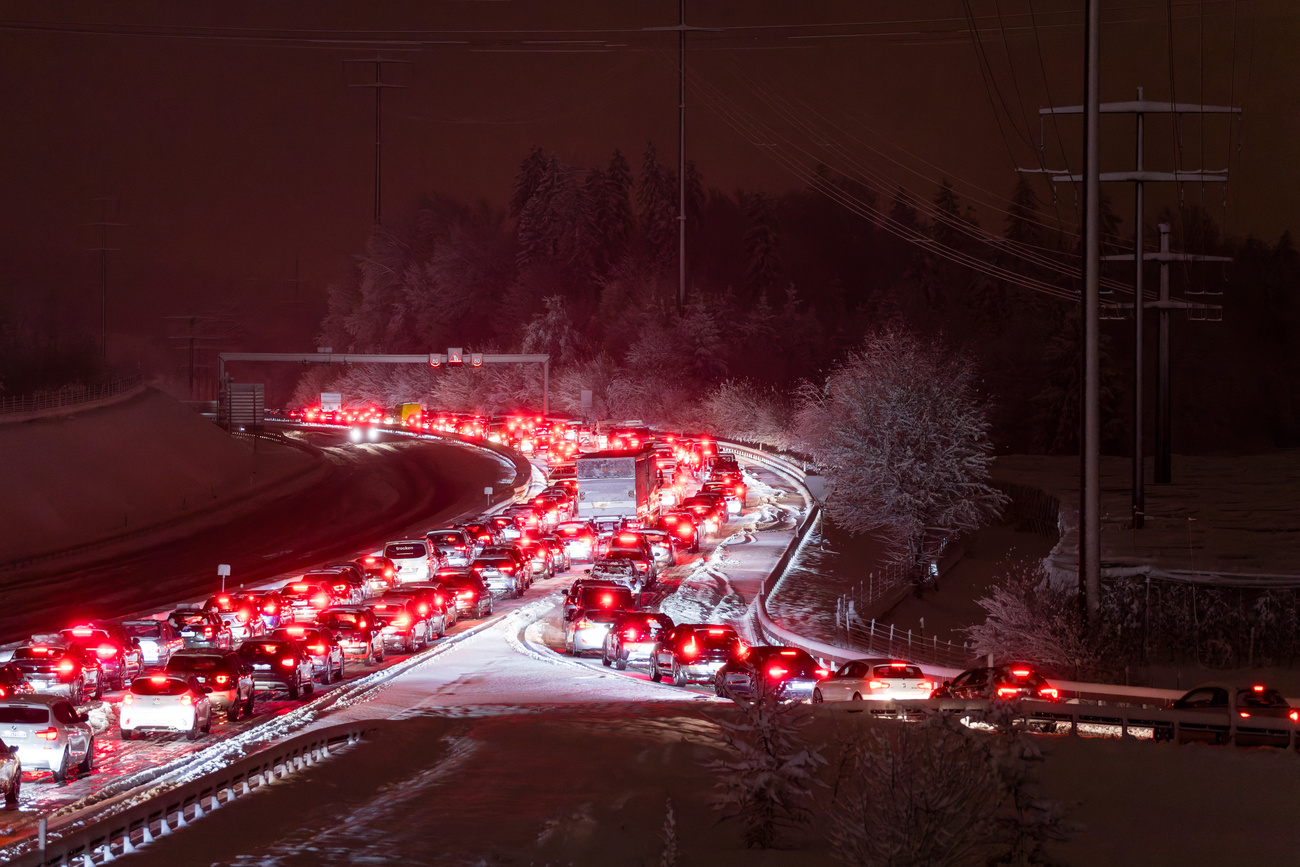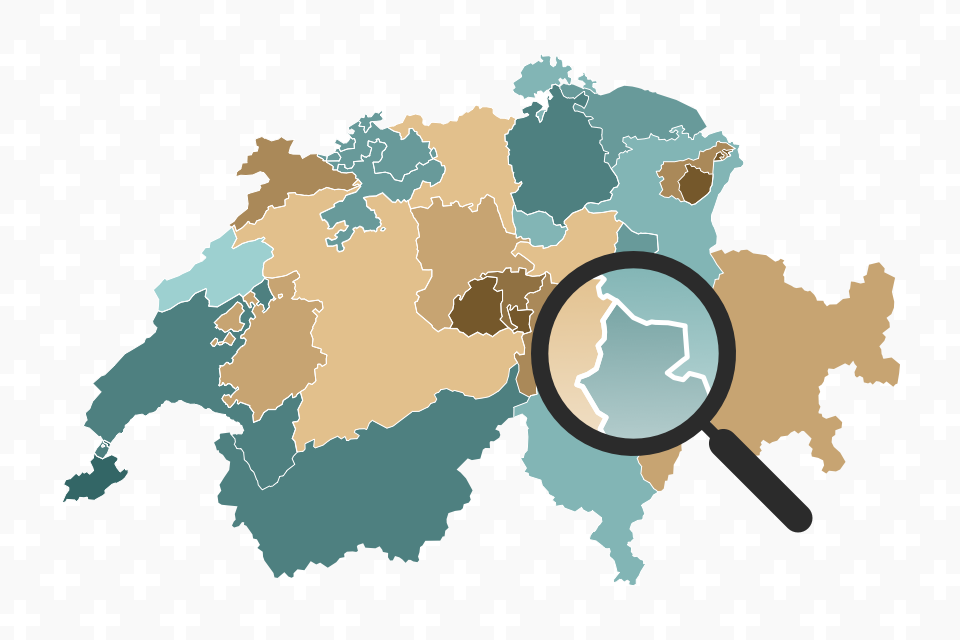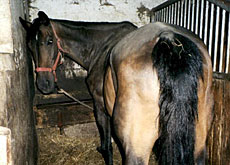Swiss horse breed faces uncertain future

A colourful caravan of horse-drawn vehicles rolls through the old town of Bern. Many of the coachmen and passengers are in period costume.
The procession includes elegant carriages, plain wagons, a pony-drawn pleasure cart, and a beefy stagecoach. It is a fairly quiet afternoon, so the clattering hooves, the neighing, snorting and occasional whinny attract quite some attention.
But they are not there for the spectacle: they have come to fight for their future.
As the procession passes in front of the parliament building, one elegant open calèche slips away to the back, where three men get out to deliver a petition with over 62,000 signatures requesting that the National Stud in Avenches should not be included in a package of budget-cutting measures that will be voted on later on this year.
In all the excitement, only the horses seem perfectly calm, despite nosy photographers, curious passers-by, spluttering police motorcycles and the sudden wail of an ambulance at a street crossing.
Their poise is not due to training. Most of the horses present are Franches-Montagnes or Freibergers, originally a draft horse with an especially serene personality.
“They are very much like the Swiss people,” Gerhard Fux, instigator of the petition to save the National Stud, told swissinfo.ch. “Down to earth, stable and friendly.”
Good neigh-bours
The Franches-Montagnes breed originated in the plateau of the same name, but since there was no official registry, little is known of their lineage.
“We rely on any document we can find that will describe them,” says Vincent Wermeille, who comes from a family of breeders and has researched the history of the Franches-Montagnes.
The workshop at his farm in Saignelégier functions as a private museum. The walls and ceiling are lined with genealogical trees, photos of horses at competitions, brasses and other harness parts.
One of his treasured documents is a public notice dated 30 Thermidor of the Year VI of the French Revolution (August 17, 1798) announcing the theft of a mare with the following description: “… red-brown coat, four feet six inches tall, black mane, with hairs cut short on either side, fetlocks and tail are black…”
Interestingly, one noticeable feature of the Franches-Montagnes today is the crew-cut mane. The reason is practical: The horses tend to rub up against the ubiquitous pines in the Jura and end up with a sap-stiffened mane that has to be cut anyway.
Who’s your daddy?
The first known attempts to streamline the somewhat portly and powerful horse were made in the 19th century. The aim was to create an all-round horse capable of working in the fields and serving the cavalry and artillery at the same time.
Two stallions with Anglo-Norman background ultimately provided the best genes, Imprévu and Vaillant. The latter was owned by none other than Vincent Wermeille’s great-grandfather, Paul Wermeille.
The horse remained fairly stable genetically for much of the 20th century. Then, in the late 60s, the studbook held by the Fédération Suisse d’élevage du cheval de la race des Franches-Montagnes (FSFM), the National Federation for Breeding of the Franches-Montagnes Horses, was cracked open a bit to introduce “new blood”, as Wermeille puts it, notably from a Swedish half-blood named Aladin.
The colours became fixed, bay or chestnut; the markings are supposed to be kept to a minimum, usually fetlocks and a facial stripe.
Happy hooves
Breeding is not an exact science, however, and not all the offspring were ideal.
“They wanted a horse with the mental state of a Franches-Montagnes, but some of the new lines produced horses with a temper, which was fine for the wagon drivers, because they wanted to win their races,” said Wermeille.
Ultimately, in 1991, one century after the births of Vaillant and Imprévu, the studbook was closed again. Something of an ideal horse had finally been found.
Standing at up to 15 hands, the Franches-Montagnes are ideal for a wide range of disciplines, including Western – or ranch-style – riding. It is perfectly adapted to long tours, for pulling a covered wagon, or for children, beginners and riders wanting a calm mount.
In fact, the Franches-Montagnes are certified: at the age of three they must pass a test to see how well they can cope with fear. An umbrella is opened up next to its face, or a chain saw is started, or it has to walk across a canvas.
To demonstrate this to a customer, Wermeille might take a client on a ride down to the train station or to the emergency arrivals of the local hospital.
“The horse will not budge,” he says with a hint of pride. “You can’t do that with just any horse.”
So there was no worry about bringing the horses to the capital to back up the case for their future.
The National Stud is crucial for the continuation of the Franches-Montagnes breed, Stéphane Klopfenstein, manager of the FSFM, told swissinfo.ch. It owns 60 studs, some of which are from rarer lines.
“Where will they go, if the National Stud disappears? Private enterprise would just select the profitable lines, which could threaten the genetic diversity and the long-term survival of this purely Swiss breed.”
Marton Radkai, swissinfo.ch
The Franches-Montagnes area which gave the horses their name, is a plateau stretching between Delémont and La Chaux-de-Fonds in western Switzerland.
Water is sparse on the plateau, the soil is not very fertile and the winters are long.
Settlers who agreed to go there were granted freedom from taxation: the name translates as Free Mountains.
Their horses were vital companions. They hauled wood, ploughed the fields, and in winter helped clear the few roads of snow.
The Franches-Montagnes breed was first presented at the annual horse fair in Saignelégier – the major such event in Switzerland – in 1897.
The Swiss National Stud was founded in 1899 and has been based in the western town of Avenches since 1911.
It is part of Agroscope, which oversees research programmes for the Federal Agriculture Office.
Its main task is to support the breeding of horses on farms.
A major focus is on practical research, where the subjects include:
Well-being and behaviour
Health
Reproduction and genetics
It cooperates with relevant institutions and universities at home and abroad.

In compliance with the JTI standards
More: SWI swissinfo.ch certified by the Journalism Trust Initiative













You can find an overview of ongoing debates with our journalists here . Please join us!
If you want to start a conversation about a topic raised in this article or want to report factual errors, email us at english@swissinfo.ch.